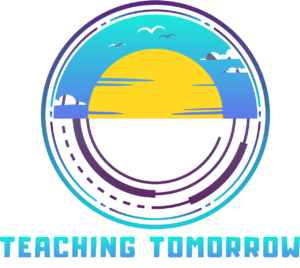Scalable Coaching Business Automation: How to Streamline Your Coaching Practice for Maximum Growth
Understanding Scalable Coaching Business Automation
Scalable coaching business automation is the process of using systems and tools to manage repetitive tasks, streamline operations, and maximize client engagement without sacrificing quality. For coaching professionals, relying solely on manual processes often limits growth and creates bottlenecks in scheduling, client management, and revenue generation. Automation transforms these labor-intensive activities into efficient workflows, freeing coaches to focus on high-value interactions. A scalable system allows a business to handle more clients, create consistent experiences, and maintain operational efficiency without needing to increase hours worked. Beyond efficiency, automation ensures your clients receive timely communication, reminders, and resources that enhance their coaching experience. It also helps maintain a professional image, reinforcing trust and reliability in your coaching brand. Understanding and implementing scalable coaching business automation is essential for coaches who aim to expand their practice while keeping quality at the forefront.
Key Areas to Automate in a Coaching Business
Automation can touch nearly every aspect of a coaching business. Client onboarding is one of the most critical areas, where forms, welcome sequences, and automated scheduling streamline the process of getting new clients up to speed. Payment processing is another essential component; automated invoices, recurring payment plans, and subscription-based services reduce manual bookkeeping and increase financial consistency. Scheduling sessions with clients becomes effortless when calendar integrations and automated reminders are implemented, minimizing missed appointments. Marketing automation is vital for attracting and nurturing leads—tools for email campaigns, social media scheduling, and automated follow-ups ensure coaches stay connected with potential clients without constant manual effort. Client progress tracking through dashboards and automated assessments provides insights into growth, engagement, and areas needing attention. Automating these areas enables coaches to deliver consistent, professional experiences while scaling their capacity. Each automated process should focus on efficiency without compromising the personal touch that sets your coaching apart.
Choosing the Right Automation Tools for Your Coaching Business
Selecting the right tools is crucial for achieving effective scalable coaching business automation. The primary criteria for choosing tools include ease of use, integration capabilities, and scalability to accommodate future growth. Popular tools for coaches range from CRM platforms like HubSpot or Zoho to scheduling software such as Calendly or Acuity, which allow seamless session management. Payment processing tools like Stripe or PayPal help automate financial workflows, while email marketing platforms like Mailchimp or ConvertKit manage lead nurturing and client communication. Many coaches also rely on project management tools such as Asana or Trello to track client tasks, goals, and progress. Integrating these tools ensures that data flows smoothly between systems, creating a cohesive automated ecosystem. Choosing tools that align with your coaching model and goals is the foundation for a scalable, efficient, and professional coaching business.
Building a Scalable Client Journey
Mapping out a client journey is essential for implementing automation effectively. This journey begins with lead generation, moves through onboarding, coaching sessions, and long-term engagement, and ends with retention or upsell opportunities. Automation plays a key role in reducing manual touchpoints while maintaining personalization, ensuring clients feel valued at every stage. Segmenting clients based on their goals, preferences, or package type allows coaches to tailor automated communication and resources, enhancing engagement. Automated follow-ups, reminders, and content delivery ensure clients remain on track with their goals without constant manual effort from the coach. By clearly defining each step of the journey and implementing automation strategically, coaches can scale without compromising the quality or consistency of the client experience. A well-designed client journey also provides measurable touchpoints to track engagement, satisfaction, and conversion rates.
Strategies to Increase Revenue Through Automation
Automation is not just about efficiency—it directly impacts revenue generation. Offering tiered coaching packages with automated workflows allows clients to easily upgrade, purchase additional services, or engage with higher-value offerings. Upsells and cross-sells can be seamlessly integrated into automated email sequences, promoting relevant products or sessions at the right time. Automation also frees up a coach’s time, allowing them to focus on high-value activities such as group coaching, premium programs, or strategic marketing initiatives. Recurring payment setups and subscription-based services create predictable cash flow while reducing administrative work. Implementing automated reminders for renewals or additional services ensures clients continue engaging with your offerings consistently. Additionally, automation enables coaches to manage larger client volumes without sacrificing service quality, effectively multiplying revenue potential. By strategically leveraging automation, coaches can create a scalable model that grows their income while maintaining personalized attention.
Maintaining Quality While Scaling with Automation
One of the most significant concerns coaches have when automating is losing personal connection with clients. Maintaining quality means ensuring automation enhances the coaching experience rather than replacing human interaction. Automated messages and workflows should feel personal, incorporating client names, preferences, and goals to maintain engagement. Regularly reviewing automated processes allows coaches to adjust messaging, sequences, and touchpoints to ensure they meet client expectations. Feedback loops, surveys, and automated check-ins provide insights into client satisfaction and identify areas needing improvement. Automation should handle repetitive administrative tasks, freeing coaches to focus on meaningful sessions, consultations, and creative solutions for clients. By balancing automation and human touch, coaches can scale their practice while preserving the core value of personalized coaching. Continuous refinement ensures clients continue to experience the same care and attention as your practice grows.
Common Challenges and How to Overcome Them
Implementing scalable coaching business automation comes with challenges that require proactive solutions. Technical difficulties, including software integration issues or learning curves, can slow progress, but proper training and support mitigate these risks. Over-automation, where clients feel disconnected or overly managed by systems, can be avoided by maintaining human touchpoints alongside automated workflows. Client resistance may occur if automation is perceived as impersonal, which can be countered through transparent communication and personalized messaging. Ensuring data security and privacy is critical when handling client information through automated tools. Planning gradual implementation and testing workflows before full-scale deployment helps reduce errors and confusion. Regularly monitoring and refining automated systems ensures they remain effective, efficient, and client-friendly. By addressing these challenges strategically, coaches can confidently scale their business without compromising quality or reputation.
Measuring Success of Your Automated Coaching Systems
Tracking the performance of automated systems is essential to evaluate growth and client engagement. Key performance indicators (KPIs) include client retention rates, lead conversion rates, session attendance, and client satisfaction scores. Analytics tools embedded in CRMs, email marketing software, and scheduling platforms provide actionable insights to optimize workflows. Monitoring engagement metrics, such as email open rates, click-throughs, and client portal usage, highlights areas for improvement. Adjusting automation sequences based on these insights ensures that processes remain efficient, personalized, and impactful. Tracking financial KPIs, including recurring revenue, upsells, and package purchases, demonstrates the tangible benefits of automation on profitability. By measuring success consistently, coaches can make data-driven decisions, refining their scalable coaching business automation to maximize growth and client satisfaction.
FAQ
What exactly does scalable coaching business automation entail?
Scalable coaching business automation involves implementing systems and tools to handle repetitive tasks, client management, scheduling, payments, and marketing, allowing your practice to grow efficiently while maintaining quality.
How much time can automation save for coaches?
Automation can save coaches several hours per week by eliminating manual tasks such as appointment scheduling, payment processing, and follow-up emails, freeing up time for client sessions and business growth activities.
Can automation maintain a personalized coaching experience?
Yes, when implemented correctly, automation can maintain a personal touch by using client segmentation, personalized messaging, and tailored workflows while handling repetitive administrative tasks efficiently.
What are the first steps to automating my coaching business?
Start by mapping out your client journey, identifying repetitive tasks, selecting appropriate tools for scheduling, payments, and communication, and gradually integrating automated workflows into your practice.
Are there affordable tools for small coaching businesses looking to scale?
Absolutely. Tools like Calendly, Mailchimp, and Stripe offer affordable solutions for scheduling, email marketing, and payment processing, allowing even small practices to implement scalable coaching business automation.





